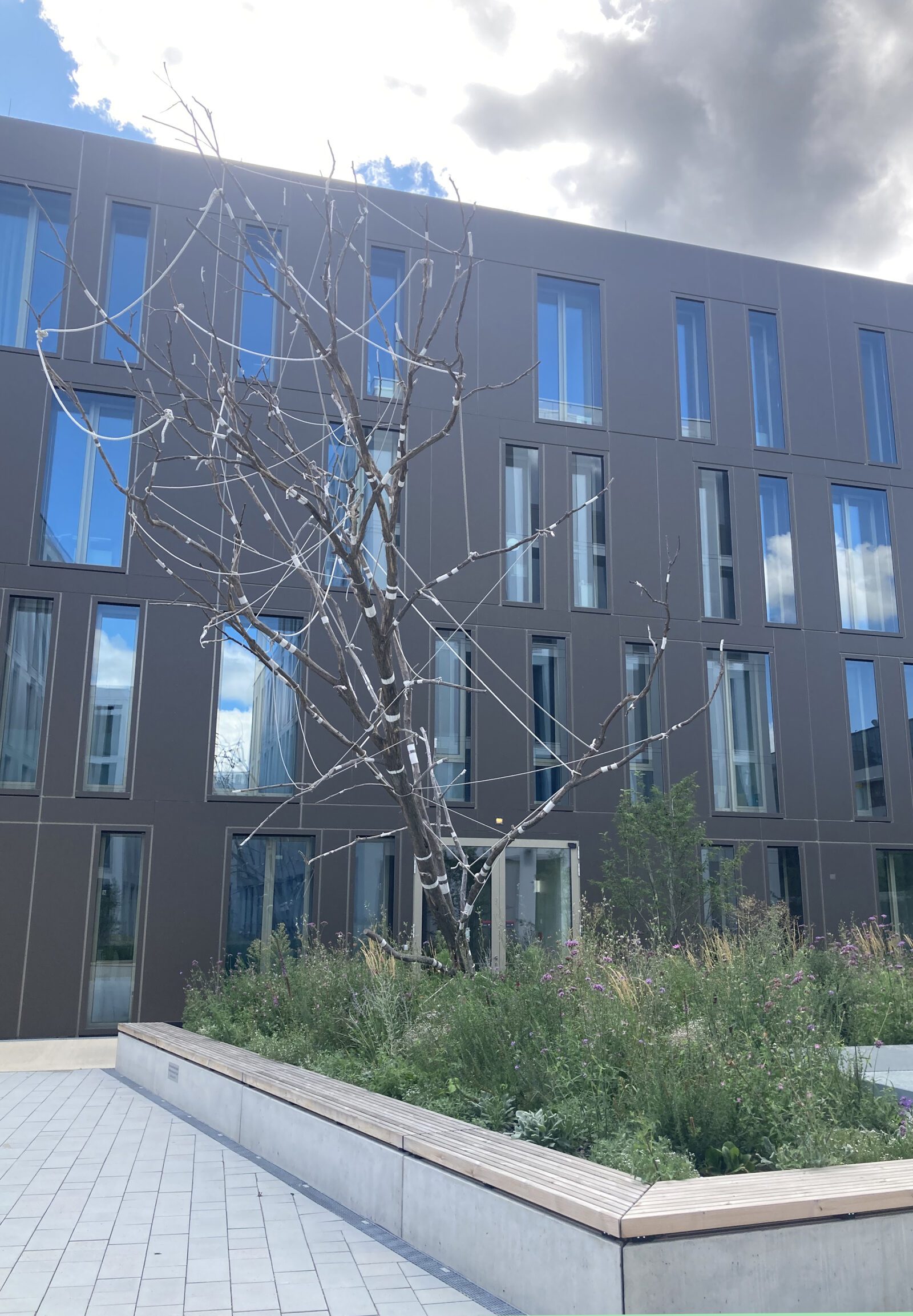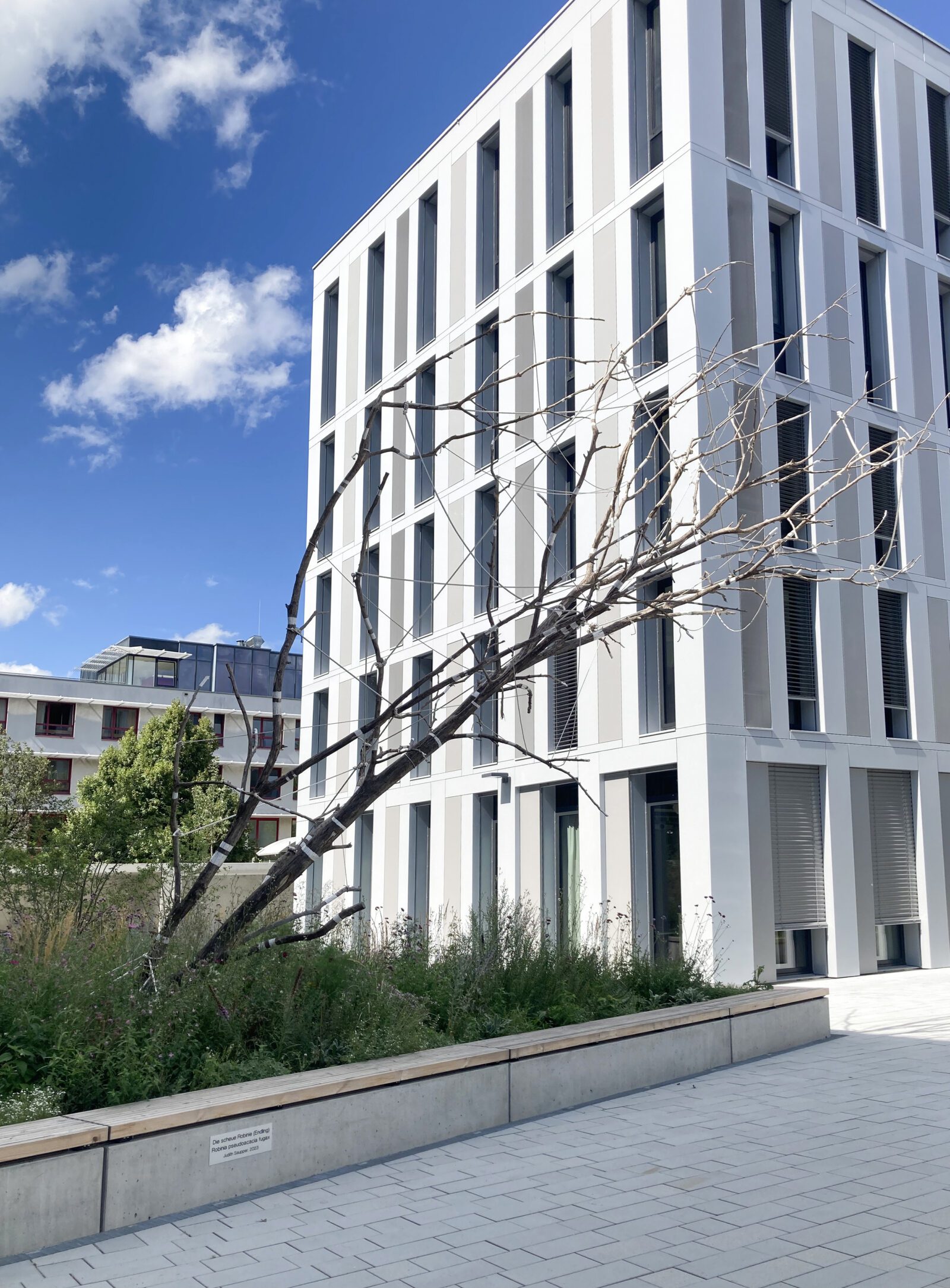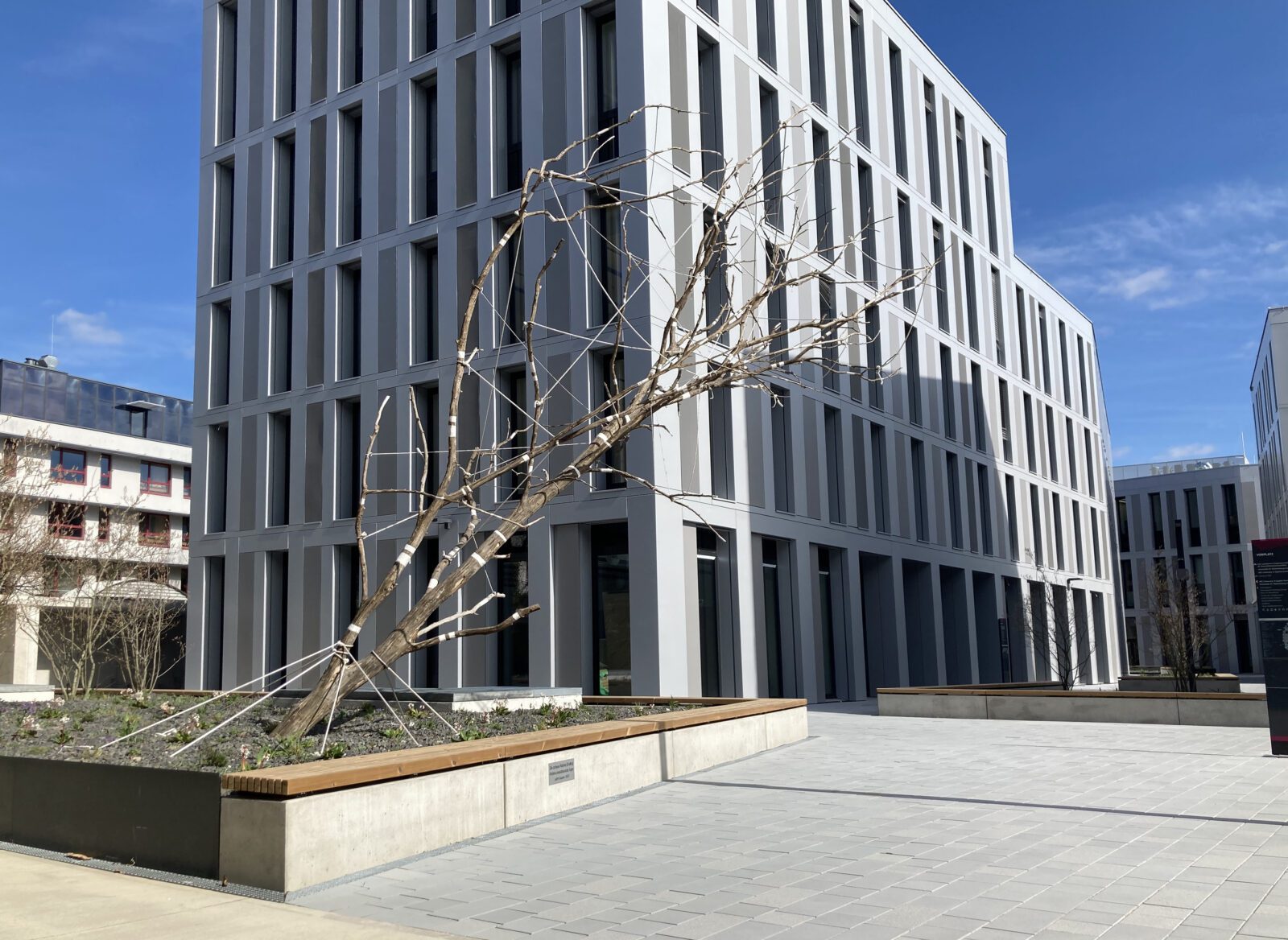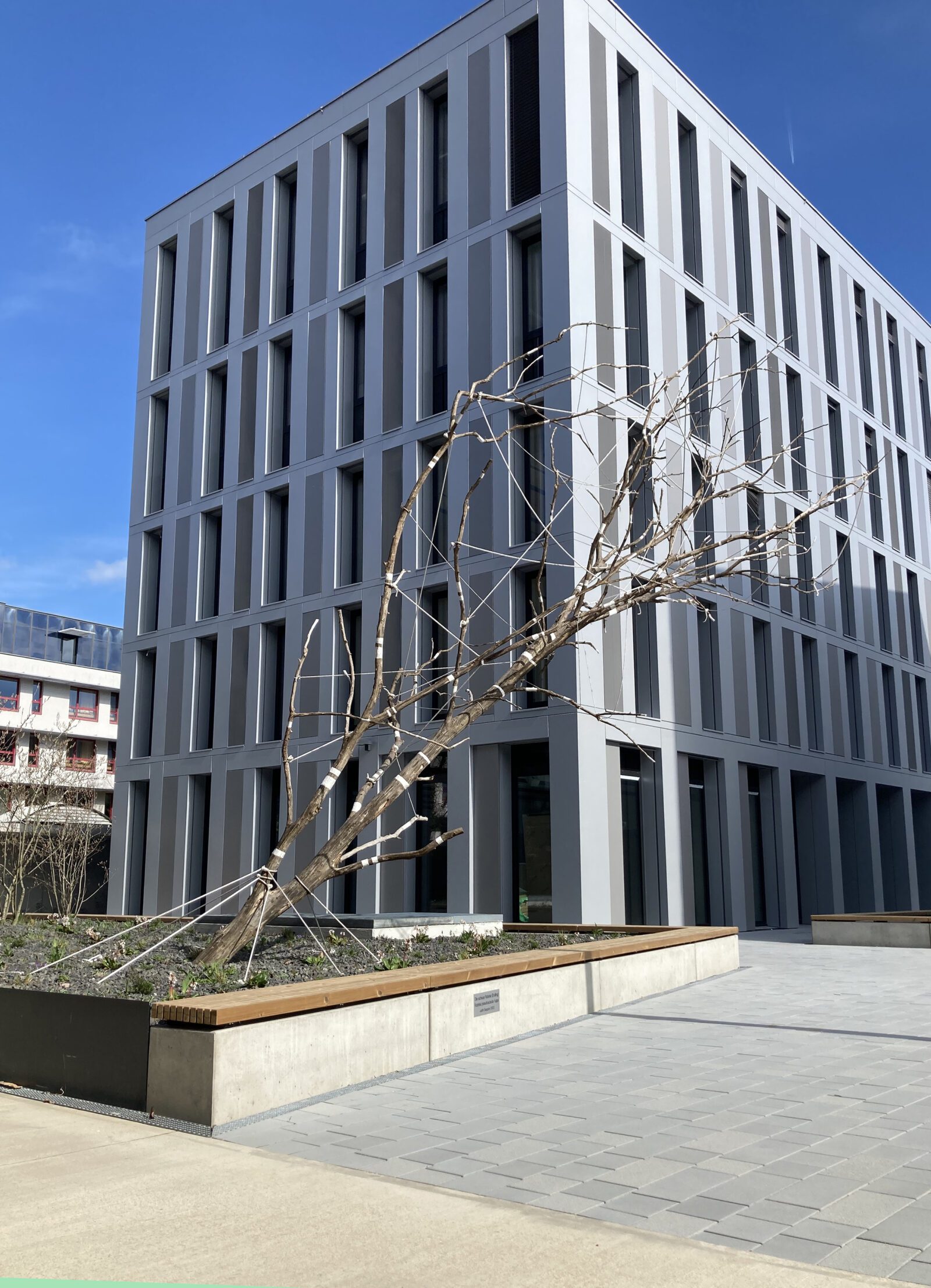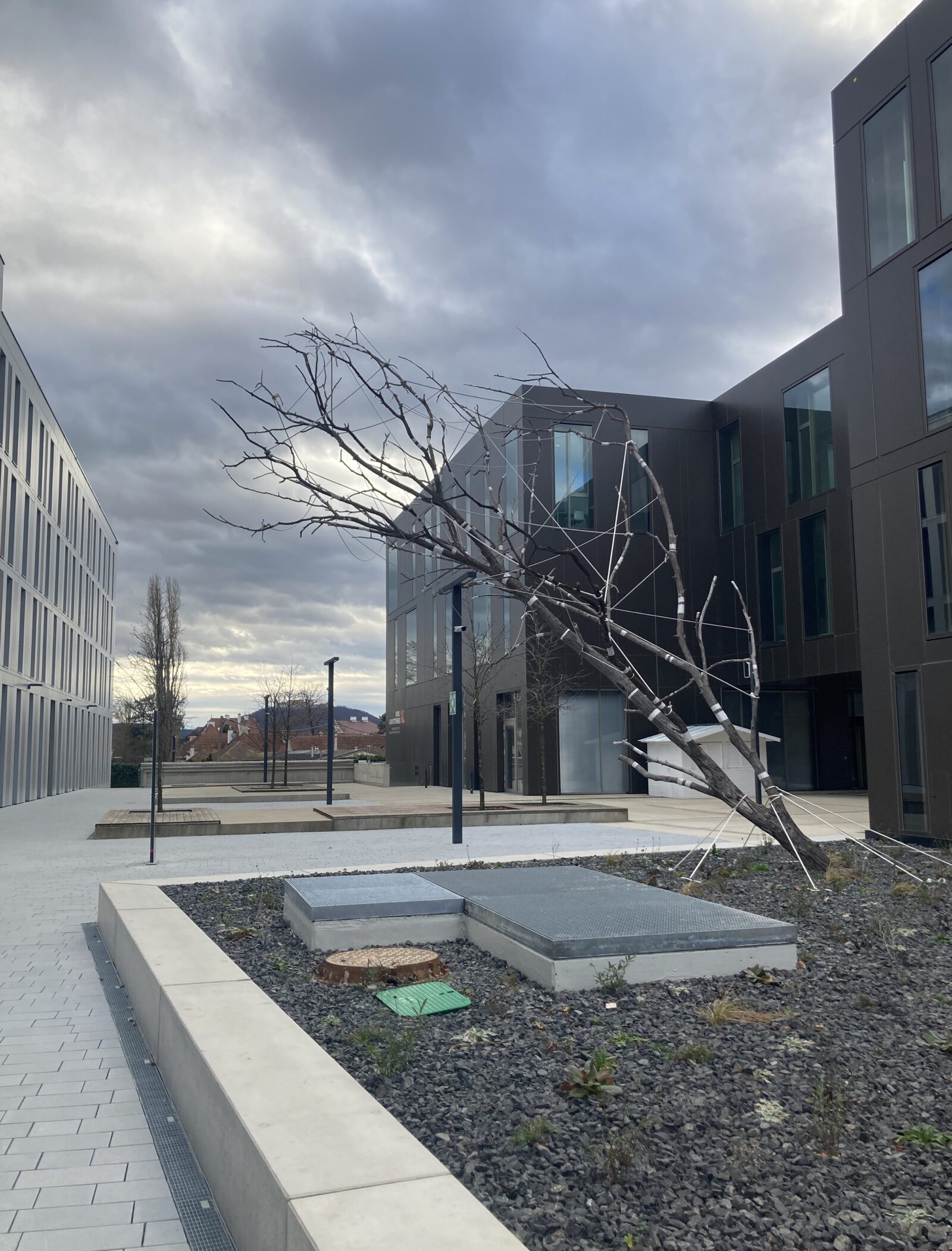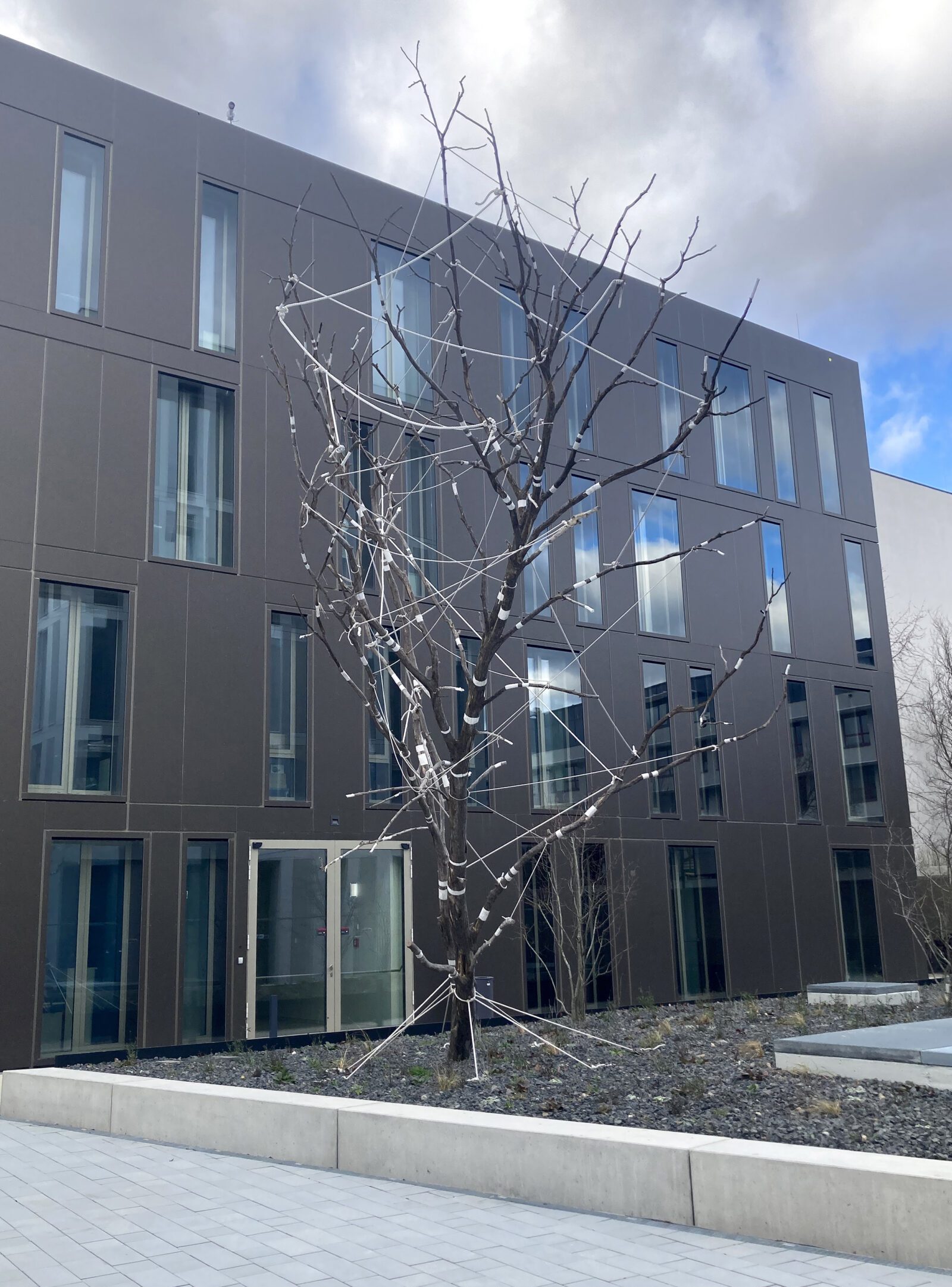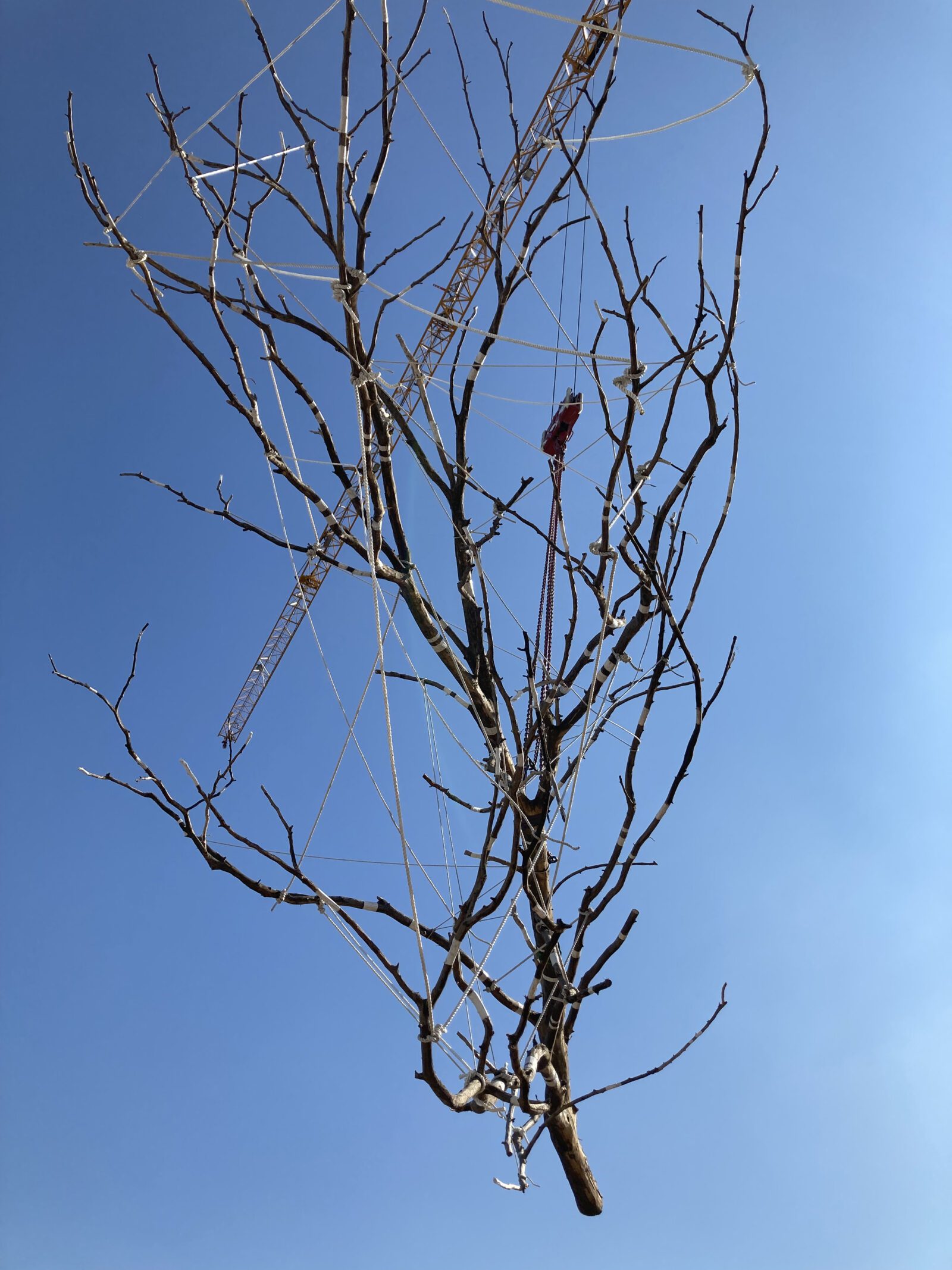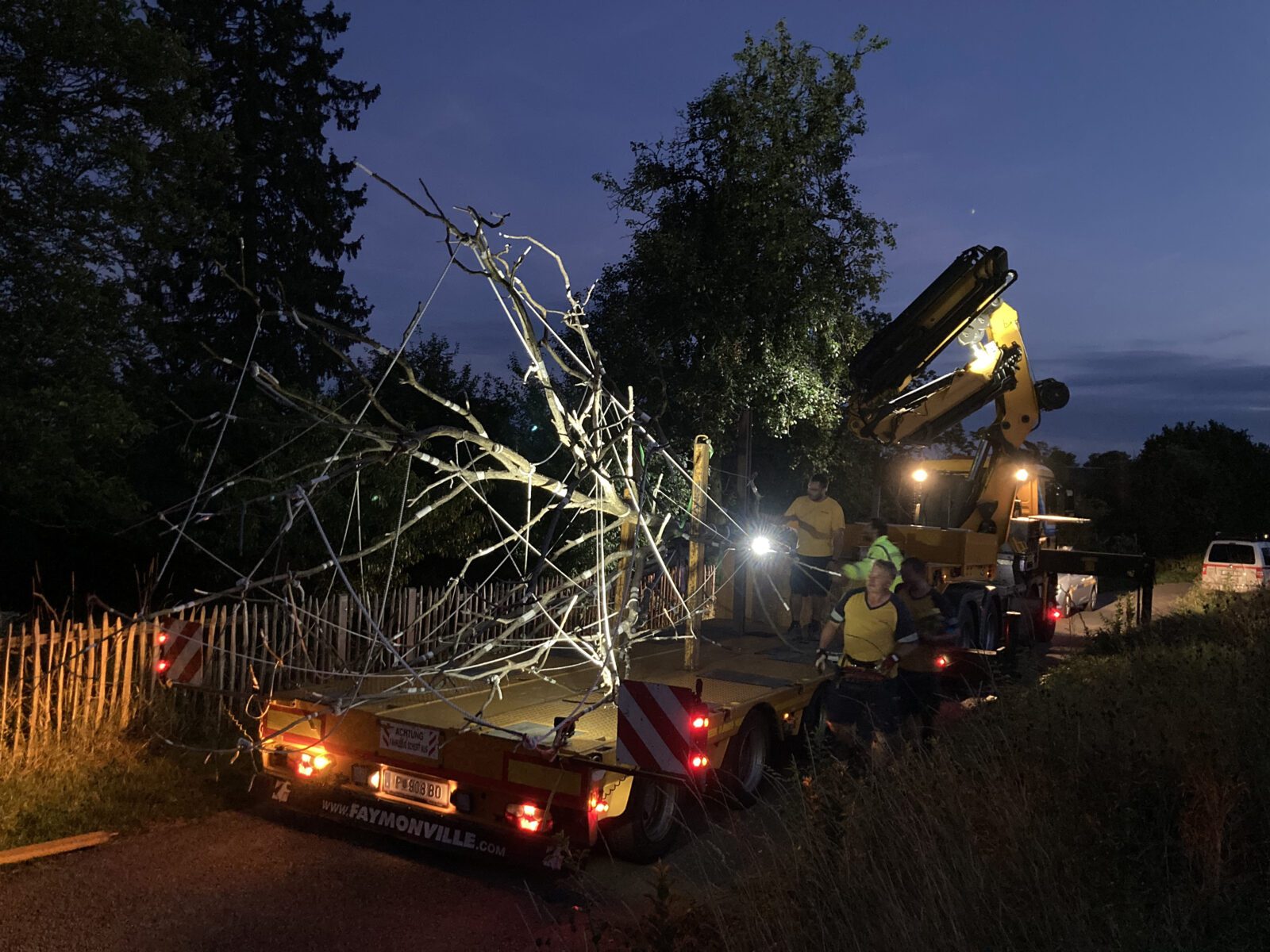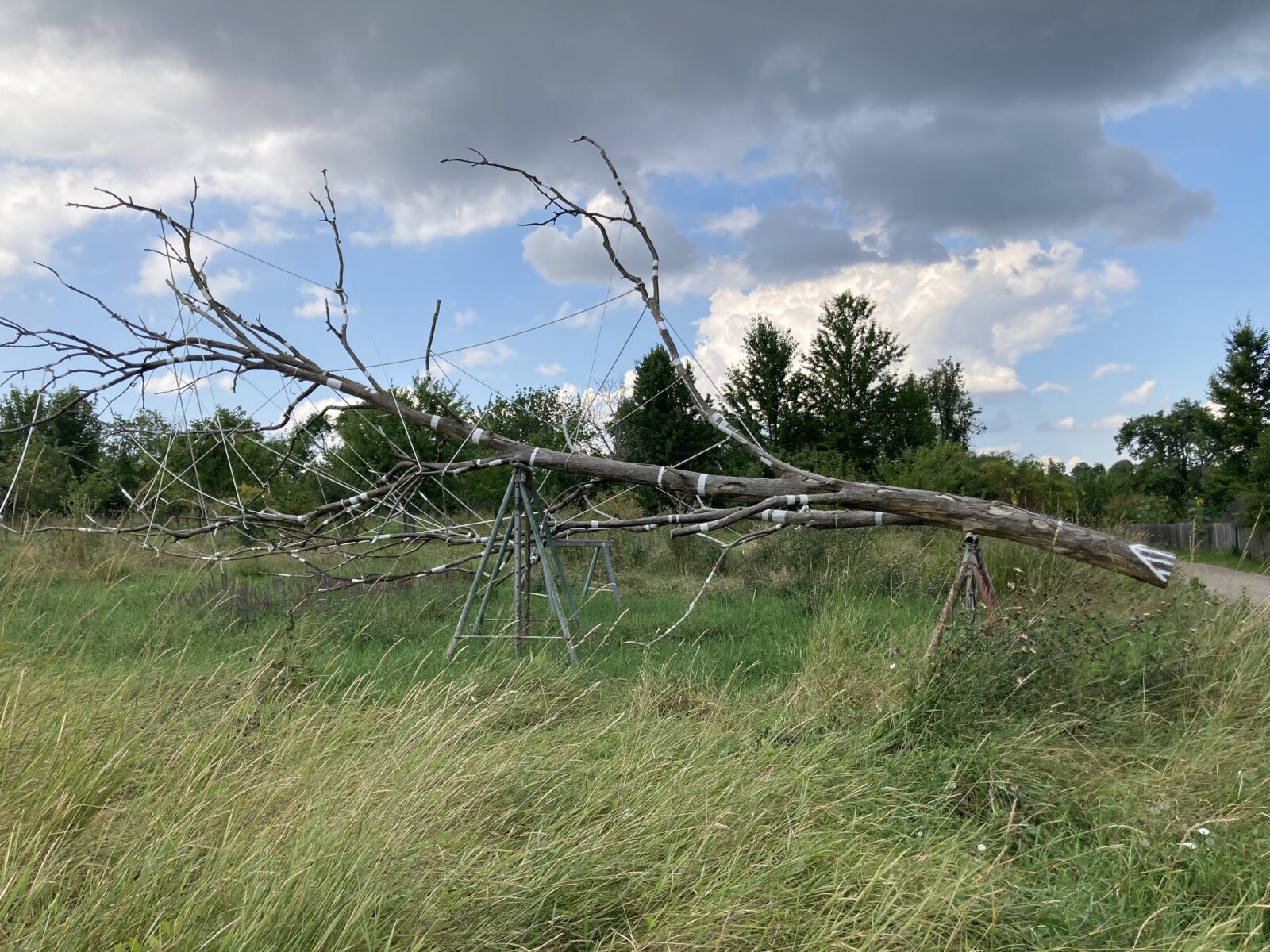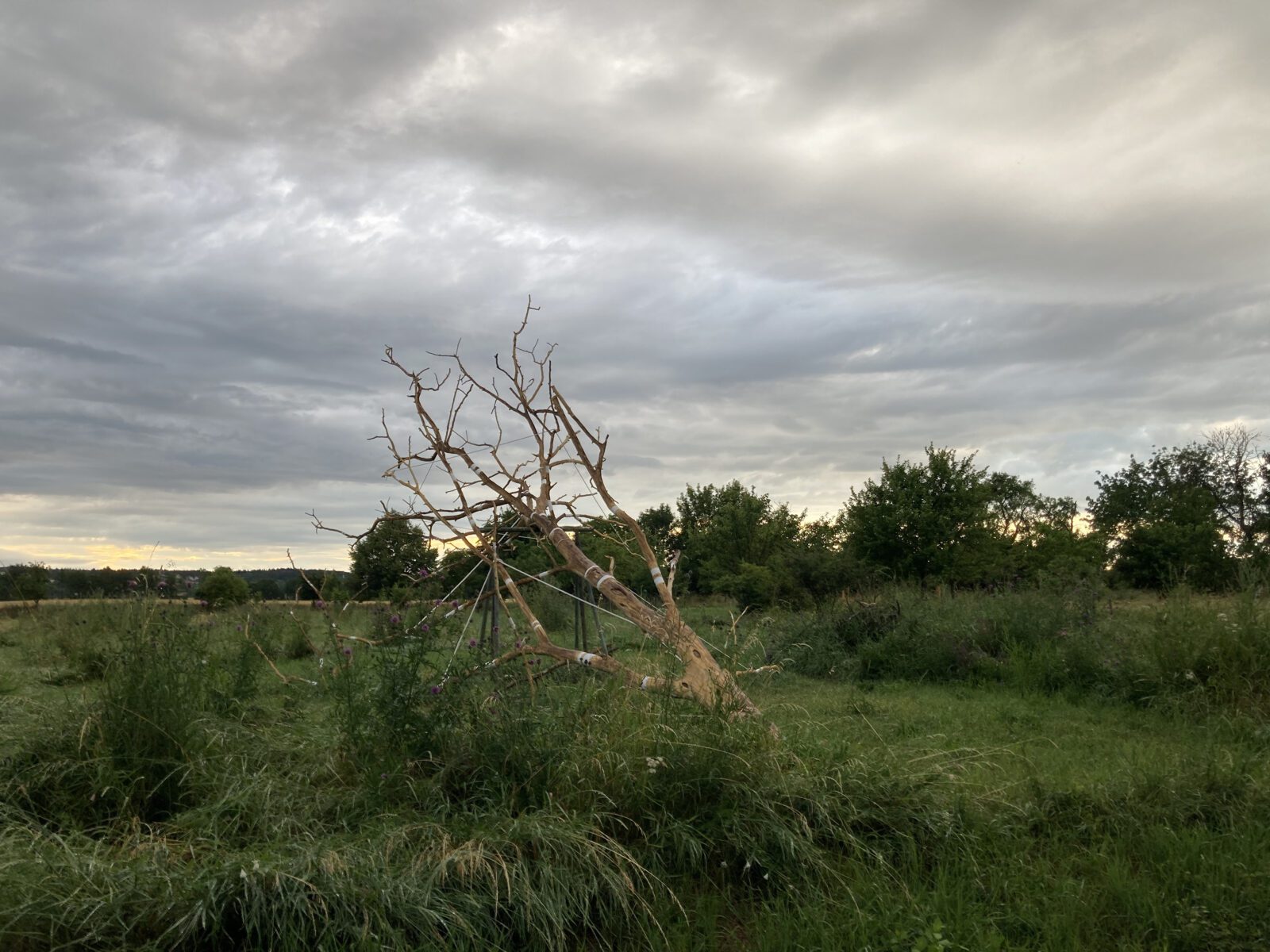The neologism ‘endling’, first suggested in correspondence published by Nature on 4 April 1996, denotes the last known living individual of a biological species.
Two of the best-known endlings are probably
Pinta island tortoise Lonesome George, died on 24 June 2012, and
Tasmanian tiger Benjamin, died on 7 September 1936.
Robinia peudoacacia fugax (endling), The reclusive locust, is a black locust with playful stripes and becoming lines, and it is the last of its kind. Beseechingly, in a 45 ° position that seems humble, even meek, it turns towards the students to proclaim: Man must be considered a part of nature, not the Lord of Creation; man must be understood to be a being just like any other.
The reclusive locust, usually preferring to fade into the shadows of its fellow trees at the edge of the woods, now stands atop a pedestal – in the limelight – to address the students with its urgent appeal.
At the moment we are in the midst of the sixth, the Holocene, mass-extinction event. Extinction has, of course, always happened; the difference to earlier events is that mankind has caused the current one: It is not a natural event. The biodiversity loss caused by humans is orders of magnitude greater than the natural loss of species.
An Austrian documentary (Ö1 Radiokolleg, 18 January 2023, 9:05 am) spoke of Thom van Dooren, author of Extinction Studies; he said, paraphrased:
No two extinctions are the same; every such event dissolves relationships, every extinction has an effect, a varying effect, on human communities and ecosystems. We must consider extinction to be a multi-faceted process. If we speak of species, we speak of multiple generations. A species is a way of life. What dies off is not just a group of organisms sharing the same DNA: The cultures, the practices of those beings are also lost.
Against this backdrop, universities, science, and research carry an enormous responsibility: Creating knowledge and understanding of interrelations, they engender change in our thinking as well as in our actions.
What is to be protected must first be known. Knowing what has been lost to extinction requires having known of its existence. – How many species were and are lost before we even learned of them? Knowledge of the various species and their needs is key for a continued future.
Universities have to envision themselves as a living organism, an organism whose actions and inactions affect the ecosystem in its entirety; and they absolutely must be cognizant of their responsibility.
The reclusive locust, Robinia pseudoacacia fugax (Endling) is a fitting symbol for this responsibility.
A large Robinia bough was sacrificed to realize this project. In atonement, two native walnut seedlings have been planted.
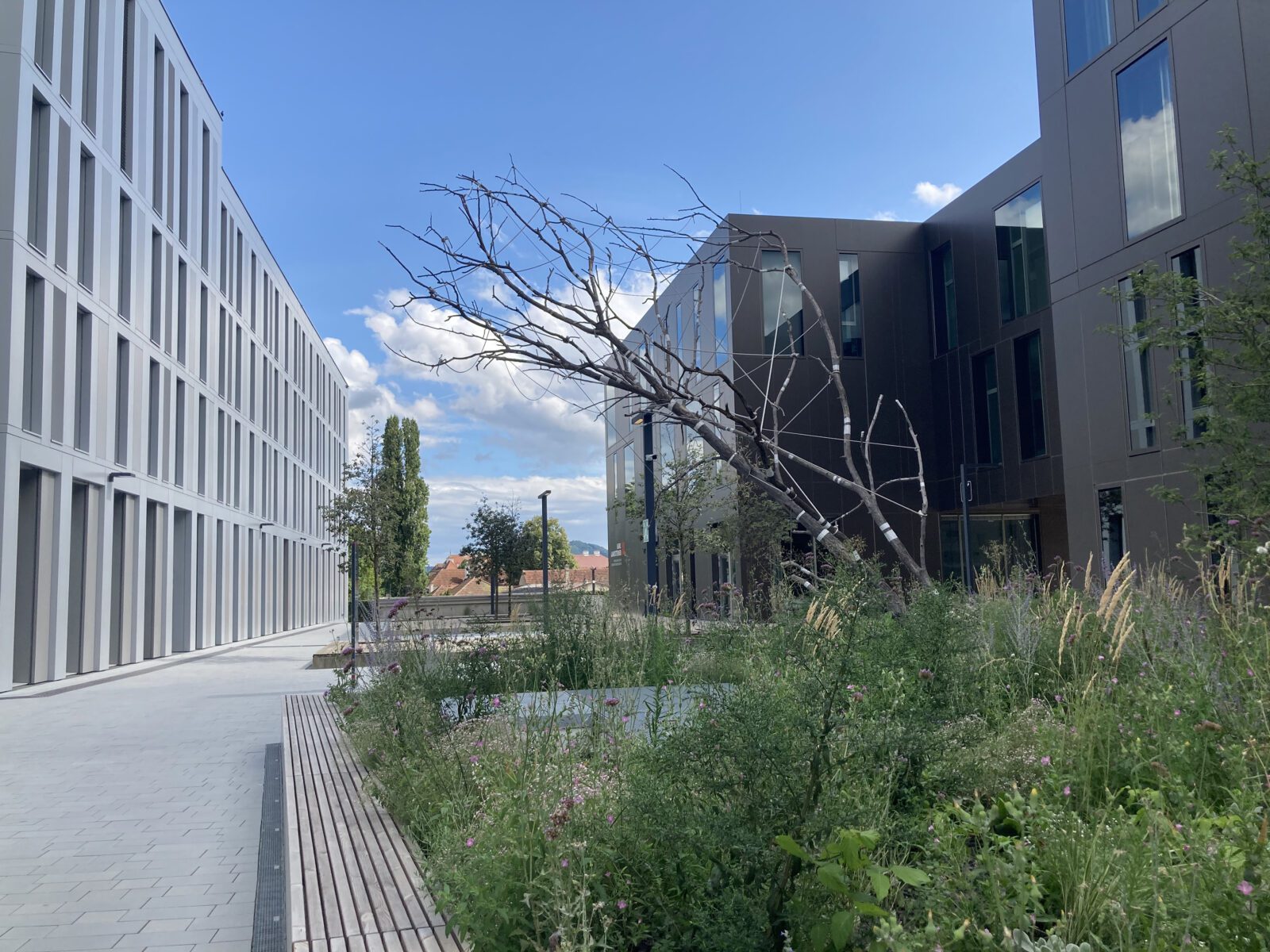
Robinia pseudoacacia fugax (Endling), The reclusive locust
2023, Art in Public Spaces Campus Krems, debarked locust Robinia pseudoacacia with lacquer, ropes and various plants, approx. 850 cm × 540 cm x 500 cm, Krems
